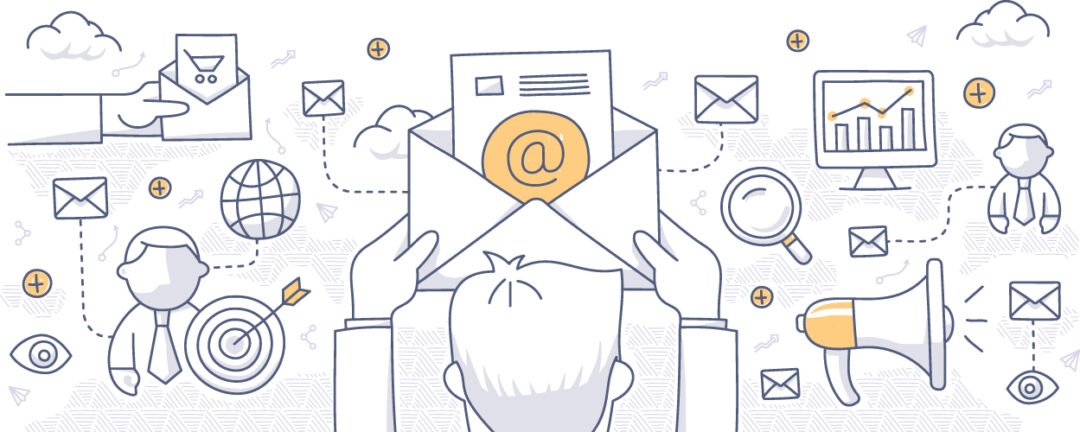Email Best Practices for Publishers Part I: Planning & Scheduling
This is the first of five articles that cover email marketing essentials. In this article, I cover planning and scheduling - which includes defining the goal of your email, audience management, and schedule optimization.
Reading Time: 6 minutes

Jump to:
Part I: Planning & Scheduling
Part II: Design Optimization
Part III: Content Optimization
Part IV: Tracking Performance
Part V: Split Testing
Introduction
Email marketing is an essential tool for communicating with your subscribers. It’s the most affordable way to drive traffic to your digital editions, remind readers of their subscription status, onboard new subscribers, and identify segments of your audience for specialized campaigns. When you look at the effectiveness and ROI of email compared to social media, it’s pretty clear that email is more effective. That’s not to say social media doesn’t have its place, but that’s an article for another day. Today we’re going to look at email best practices.
In part one of this series, I cover planning and scheduling – which includes defining the goal of your email, audience management, and schedule optimization.
Part I: Planning & Scheduling
When you make a mistake in your blog, social media post, or digital edition it’s easy enough to go back and fix. When it comes to email, however, there’s no ‘un-send’ button. That’s why every mailing, regardless of the audience, needs to be well-planned. By following some basic best practices, you can be confident in your campaign and increase the return on your investment.
Create a pre-send checklist

Creating a simple pre-send checklist can help to ensure the consistency and integrity of all your email campaigns. Each list can vary depending on the complexity of the campaign or the needs of the campaign. While a basic checklist may be sufficient if you’re sending automated onboarding emails, a more comprehensive one may be necessary for new-issue mailings. After reading through all of our suggested best practices you should have a clearer understanding of your needs and consolidate them into a pre-send checklist.
Define Your Goal
In order to define your goals, you should know the type of campaign you are sending and how you’ll measure its success.
Most digital edition campaigns come in three formats:
- Instant-delivery/onboarding emails that contain a welcome message for new subscribers
- New issue notifications that contain a preview of the featured content
- Reminder emails for subscribers who may have missed a previous email
- Subscription expiration and renewal emails
Of course, there are many more types of email campaigns that you may want to use. For a more comprehensive list, check out Really Good Emails.
Understanding the type of email you’re sending will help define the goals of the campaign and make it easier to measure success.
Once you know the type of email you are sending, you need to be able to measure the success of the campaign. Here is a list of the metrics most publishers pay attention to when it comes to their digital edition:
- Clickthrough Rate – The percentage of email recipients who clicked on one or more links contained in a given email.
- Conversion Rate – The percentage of email recipients who clicked on a link within an email and completed the desired action, such as renewing their subscription.
- Bounce Rate – The percentage of your total emails sent that could not be successfully delivered to the recipient’s inbox.
- Email Sharing/Forwarding Rate – The percentage of email recipients who clicked on a “share this” button to post email content to a social network, and/or who clicked on a “forward to a friend” button.
- Open Rate – The percentage of email recipients who open a given email.
- Unsubscribe Rate – The percentage of email recipients unsubscribe from your send list after opening a given email
I’ll cover these metrics and more in part four of this series.
If publishers opt to have GTxcel deploy their digital edition emails, we will provide detailed mailing reports with all of these KPI’s. If you are not already receiving the reports, reach out to your success team and we’ll get you set up.
Managing Your Audience
Audience data can be your most valuable tool, so organizing, cleaning, and maintaining it should be a top priority. You may be using one of the many marketing platforms to help manage and analyze your audience data, or you could be doing it using spreadsheets. Following a few simple rules will go a long way to making your campaigns more effective, and help your marketing budget go a lot further.
Knowledge is Power
Once a reader subscribes to your publication, it’s only the beginning of your relationship with them. By analyzing audience data you will have a better understanding of who they are. For example, when is the best time to communicate with them? Is there a specific type of content that resonates with them more than other subscribers? Can you create segments and A/B test your email content?
In time, you will amass insights about your subscribers that enable you to make informed and proactive decisions about your email marketing campaigns.
Maintain Clean Subscriber Lists
Regular list “scrubbing” is the most effective way to maintain the overall health of your audience data. It reduces your bounce rate and helps with the overall deliverability standing. It can also help avoid ending up in spam folders. Be sure to scrub your list at least once every 12 months, if not more often.
Re-engage with Inactive Subscribers
You should try and re-engage with those subscribers who are deemed ‘inactive’. Someone who hasn’t opened one of your emails in 6 months is clearly not interested in what you are sending them. Take the opportunity to let them know you are aware of their disinterest and ask them how you can help. Also, don’t be afraid to let them know you are about to unsubscribe them.
Make Unsubscribing Simple
Speaking of unsubscribing, making your audience jump through hoops by hiding the unsubscribe button could lead to your emails being tagged as spam. This will adversely impact your bounce rate, email deliverability, and reputation. You work hard to make the subscription process as seamless as possible, unsubscribing should be just as easy.
You work hard to make the subscription process as seamless as possible, unsubscribing should be just as easy.
Use Audience Segmentation
There are hundreds of articles on audience segmentation and how it leads to better performing campaigns, so we’re not going to dive into the science of it here. But it is important to understand that sometimes tailoring a message based on audience behavior or engagement can make a big difference.
[bctt tweet="Email Best Practices for Publishers Part I: Planning & Scheduling"]
Schedule Smartly
The best day and time to send a campaign will vary depending on your audience or the type of campaign. However, you can make some educated guesses using the research others have already done.
CoSchedule has helpfully aggregated studies from the top email providers to conclude that the best day and time to send emails is Tuesdays around 10 AM. Start there, and then test and optimize based on your own data. Click on the infographic to view it in full size.
Remember that these times are specific to audience time zones, which may or may not match yours. Depending on the size of your subscriber list, you may be able to create segments based on time zones.
Develop a Cadence
Determine how frequently you want to send emails. Some of your emails will be automated based on your user’s actions, such as instant delivery and reminder emails, but you’ll want to reach out to subscribers at least once a month. This holds true even if you don’t publish a monthly issue.
Try creating an email calendar that corresponds to your content marketing, event marketing, and other promotional calendars. Plan emails ahead of time, especially around the holiday season when inboxes are the most full.
Use Welcome Emails
Welcome emails (aka instant delivery emails or onboarding emails) are the most important emails you will send to a new subscriber. Historically, they have the highest open and click-through rates of any email campaign, and therefore provide your biggest return on investment.
As the first email, it’s the start of a relationship with the subscriber and an opportunity to build trust. You can introduce them to their subscription, how to navigate the issue, or any other important features or content you want to communicate. It also helps keep your list clean and improve deliverability by generating hard bounces for addresses entered incorrectly.
Send Reminder Emails
It’s not uncommon for subscribers with busy inboxes to scroll right by your emails. By setting up reminder emails, you can automate the process of reaching out to those who may have missed the initial email.
Conclusion
Understanding the type of email, the specific audience, and the best time to deploy your campaign are all important considerations for every email campaign.
By implementing these best practices into your email marketing strategy your subscribers should become more responsive, your campaign performance will improve and your business will continue to grow.
Get Started with Turnstyle
Unlock your content's potential. Experience the impact of a world-class publishing platform.
Follow Us
Get Started with Turnstyle
Unlock your content's potential. Experience the impact of a world-class publishing platform.
Get Started with Turnstyle
Unlock your content's potential. Experience the impact of a world-class publishing platform.



